Exporting Multiple Modules
For the purposes of this option, a Module is one of the following -
Actions
DB Connections
DB Definitions
File Connections
File Definitions
Folders
HTTP Connections
HTTP Definitions
Inbound Transports
Include Files
Maps
Outbound Transports
Parameters
Reports
SOAP Connections
SOAP Definitions
Trading Community
This option is located on the top-menu of the configuration database, under Tools.
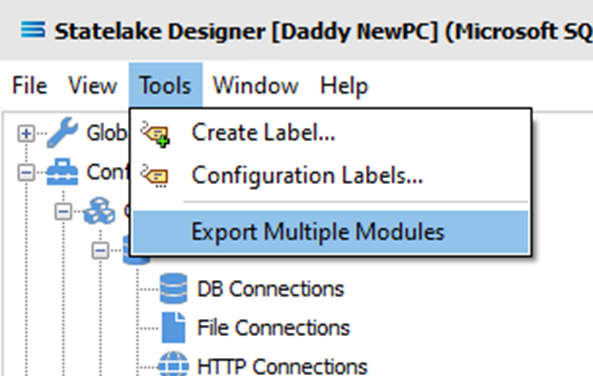
Selecting this option opens the Export Settings window.
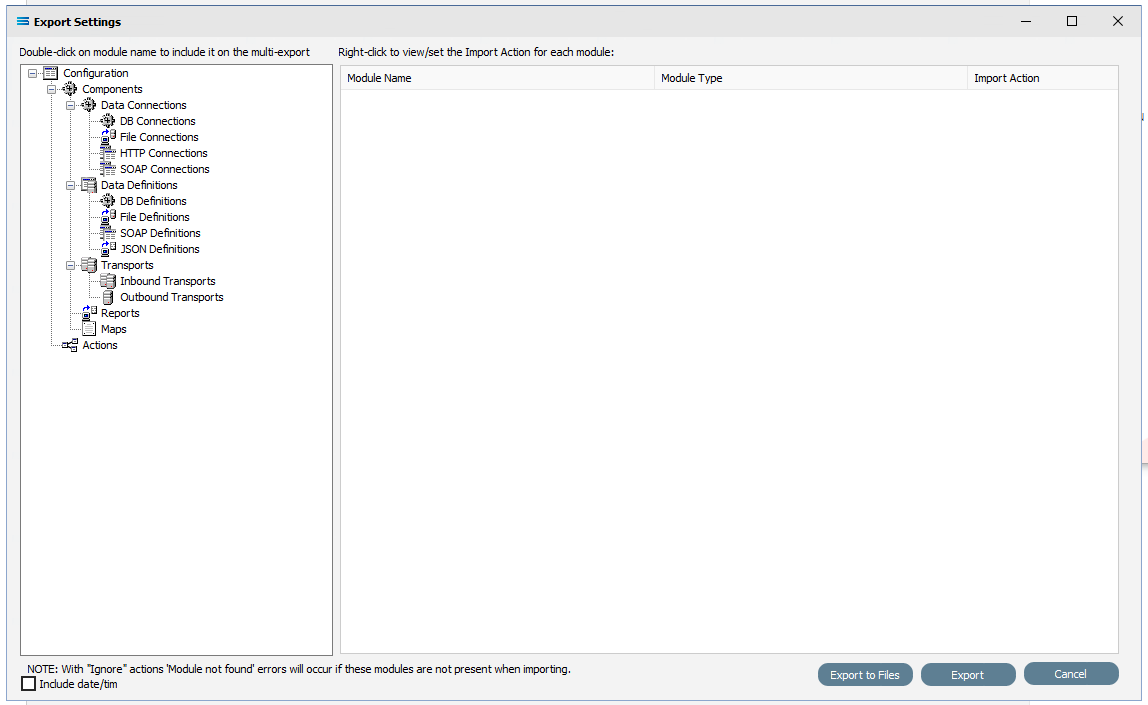
To select the individual Modules, click on the Module in the left-hand panel to expand the tree structure, then double-click on the items that you would like to Export. Once they are selected, the items and their dependents will populate in the right-hand panel. Each time an item is selected in the left-hand panel, it will be highlighted with a red background.

As they are selected from the left-hand panel, additional Module items will be added to the right-hand panel list of items to be exported. Where an item is added to the exportable list but it is already listed, it will not be duplicated.
Keep adding items until you have identified and selected all the items that you need to be exported.
To de-select a Module item and remove the items from the exportable list, simply double-click on the red highlighted item in the left-hand panel.
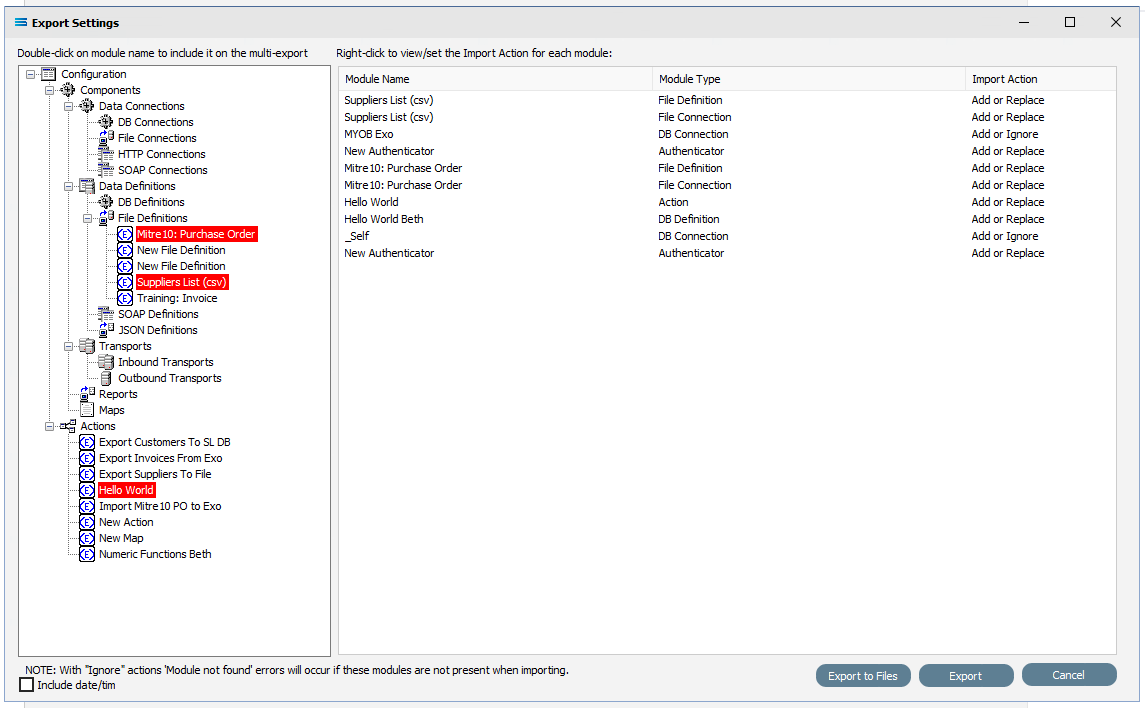
Each right-hand item will be highlighted in red. Ticking the Include date/time box at the bottom left of the window will include the date and time stamp as part of the file name to allow you create multiple files with the same file name, within the same directory of disk. On this screen you are able to set the Import Action rules, by right-clicking on the desired items and selecting from the drop-down list of available options that could apply to just that individual item.
Change the settings from the default values as appropriate by selecting from the drop-down list.
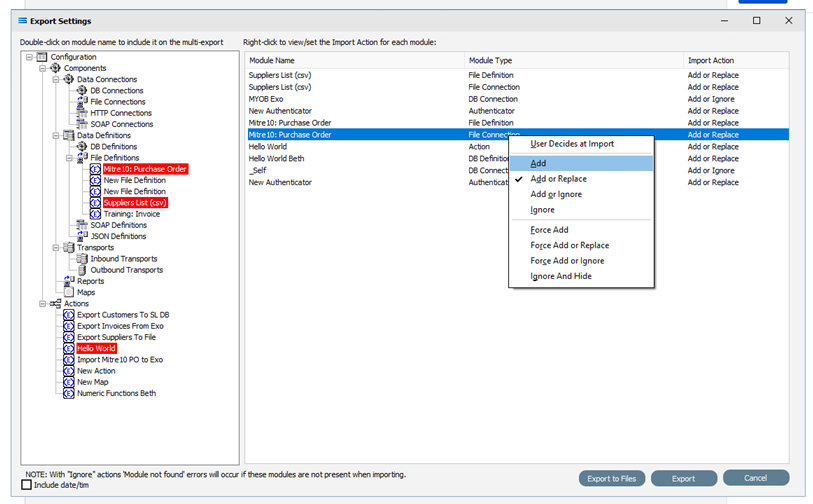
Regardless of the Module Type, the primary (top) line will not have the same available options. You will only have the following - Add, Add or Replace, Add or Ignore, or User Decides at Import. This is to ensure that the export file will never be empty.
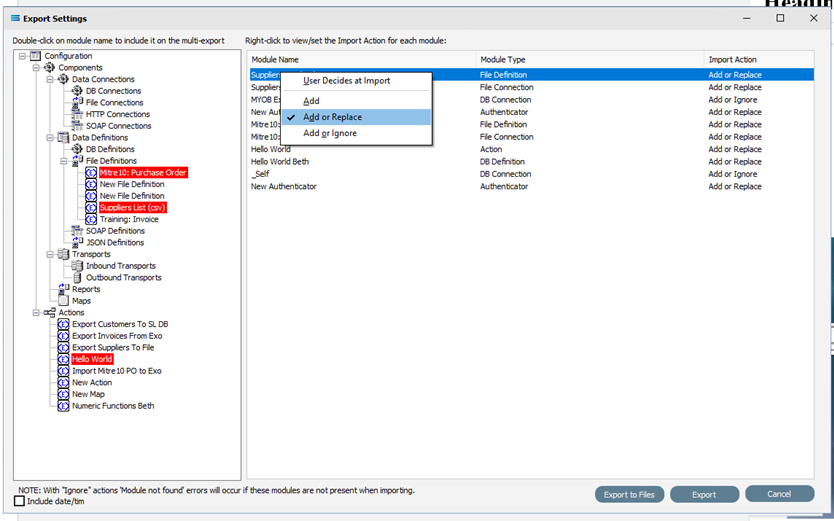
Possible Import Action Options
Option | Description |
|---|---|
User Decides at Import | The user is given the option to Import or not during the Import Process. A message will advise that the SL_CFG was modified and the import can either proceed or be cancelled. |
Add | The item is added to the configuration on Import. If the item already exists, then a new FID for the exported item is created, and that file is imported which creates two unique items with the same “friendly” name. |
Add or Replace | If it does not already exist, then the item is added to the configuration on Import. If an item of the same name does already exist, then the imported item replaces the existing item. |
Add or Ignore | If it does not already exist, then the item is added to the configuration on Import. If an item of the same name does already exist, then the imported item is ignored and not imported. This is the default option for Modules that interface with the “real world” such as DB Connections, HTTP Connections and SOAP Connections. This is the default used to stop any accidental over-write of a database or web reference. |
Ignore | The item is ignored and not imported, regardless of whether an item with that name exists or not in the configuration being imported into. An error message will display where this option is selected. |
Force Add | As with Add, but the item path is ignored and the item is saved to the root directory for the Module Type that is being exported. |
Force Add or Replace | As with Add or Replace, but the item path is ignored and the item is saved to the root directory for the Module Type that is being exported. |
Force Add or Ignore | As with Add or Ignore, but the item path is ignored and the item is saved to the root directory for the Module Type that is being exported. |
Ignore And Hide | While the Module item might be named in the list, it is to be ignored and not displayed or included in the Import. |
Buttons
Button Name | Description |
|---|---|
Cancel | Click to cancel any changes you have made. |
Export | Click to export all items into a single Template file. |
Export to Files | Click to export all items as individual files in their own right. |
Export
Once you are happy that the Import Action for all items are set correctly, selecting Export prompts you to choose a path and file name for your exported multi-module Template file.
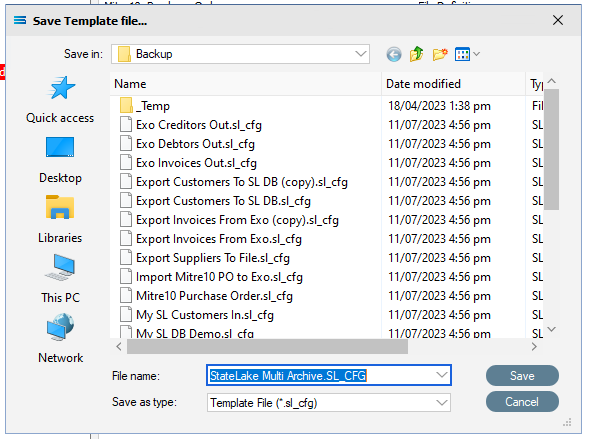
The Template file will be assigned a default file name consisting of the name and type of the module. Change the name if desired and click Save. The default extension is .SL_CFG.

A message will appear once the file has been successfully saved. The original items will remain untouched within the configuration.
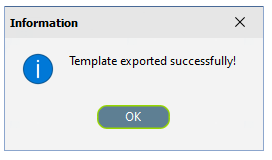
Clicking OK closes the Export Settings window and returns you to the configuration.
Export To Files
When the Import Action for all items are set appropriately, selecting Export To Files prompts you to choose a path and file name for your individual item exported files.
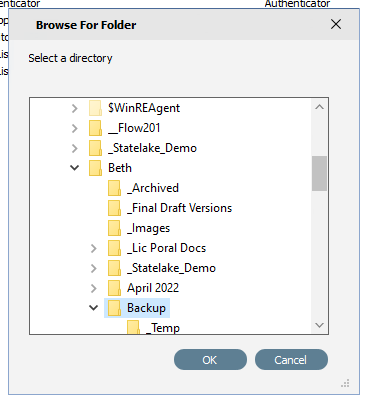
Selecting Ok creates the individual files and saves them to the selected path.
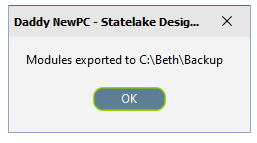
The default extension is .SL_CFG.
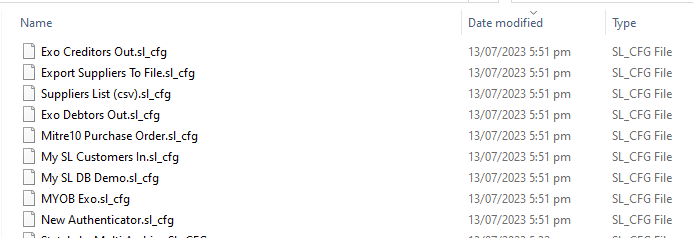
A message will appear once the file has been successfully saved.
The original items will remain untouched within the configuration.